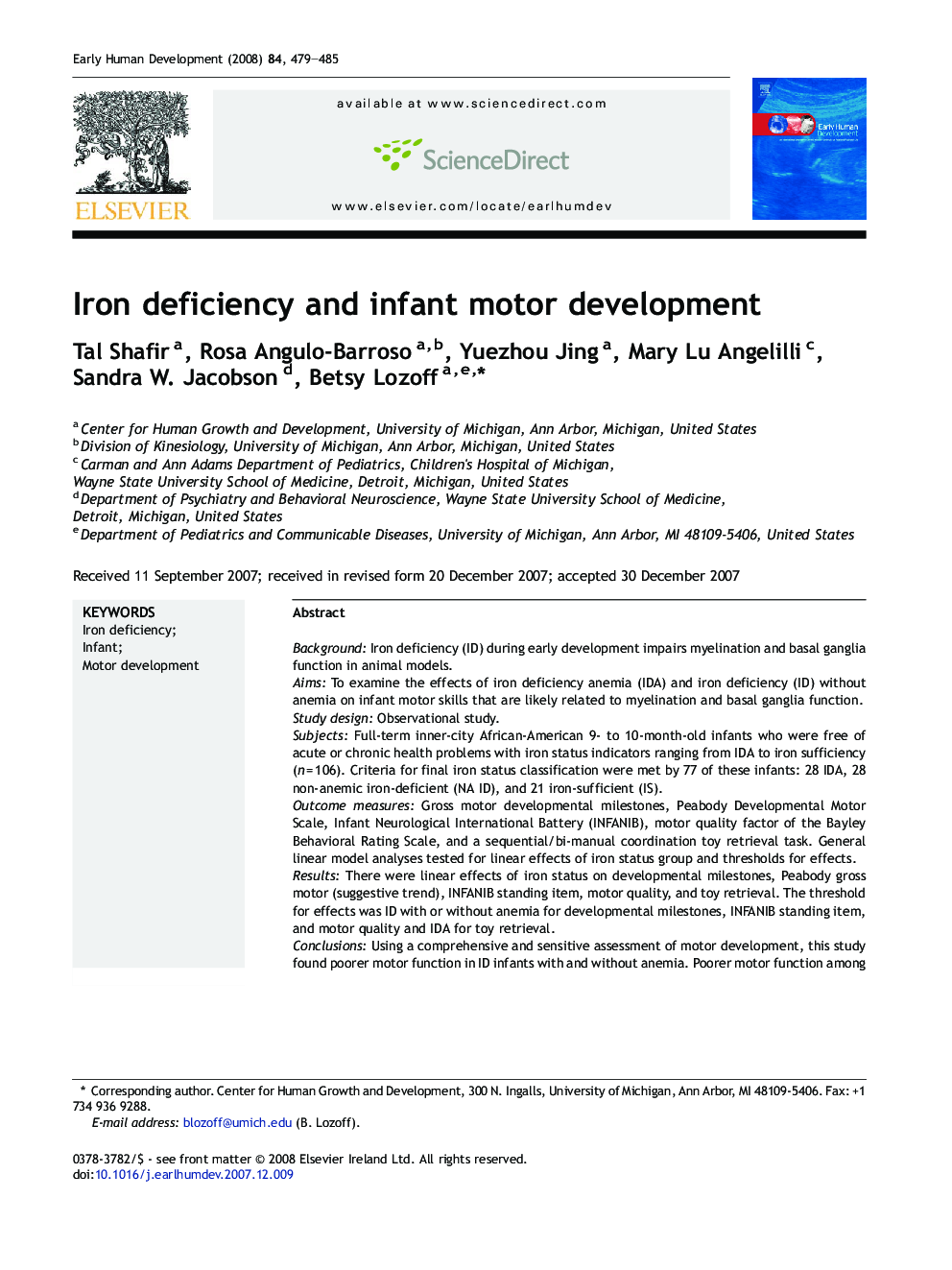| Article ID | Journal | Published Year | Pages | File Type |
|---|---|---|---|---|
| 3917114 | Early Human Development | 2008 | 7 Pages |
BackgroundIron deficiency (ID) during early development impairs myelination and basal ganglia function in animal models.AimsTo examine the effects of iron deficiency anemia (IDA) and iron deficiency (ID) without anemia on infant motor skills that are likely related to myelination and basal ganglia function.Study designObservational study.SubjectsFull-term inner-city African-American 9- to 10-month-old infants who were free of acute or chronic health problems with iron status indicators ranging from IDA to iron sufficiency (n = 106). Criteria for final iron status classification were met by 77 of these infants: 28 IDA, 28 non-anemic iron-deficient (NA ID), and 21 iron-sufficient (IS).Outcome measuresGross motor developmental milestones, Peabody Developmental Motor Scale, Infant Neurological International Battery (INFANIB), motor quality factor of the Bayley Behavioral Rating Scale, and a sequential/bi-manual coordination toy retrieval task. General linear model analyses tested for linear effects of iron status group and thresholds for effects.ResultsThere were linear effects of iron status on developmental milestones, Peabody gross motor (suggestive trend), INFANIB standing item, motor quality, and toy retrieval. The threshold for effects was ID with or without anemia for developmental milestones, INFANIB standing item, and motor quality and IDA for toy retrieval.ConclusionsUsing a comprehensive and sensitive assessment of motor development, this study found poorer motor function in ID infants with and without anemia. Poorer motor function among non-anemic ID infants is particularly concerning, since ID without anemia is not detected by common screening procedures and is more widespread than IDA.
